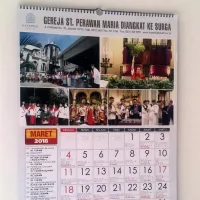Serie A is the top-tier professional football league in Italy, established in 1929-30. It evolved from the earlier Italian Football Championship (since 1898) and features a national round-robin format alongside Serie B. The league operates on a promotion and relegation system with Serie B, representing the highest level of Italian club football.
1904: Prima Categoria Tournament Name
From 1904, the tournament was named Prima Categoria, structured into regional groups, with the winners of each group participating in a playoff to declare the champions.
1909: FIF Renamed to FIGC and Joins FIFA
In 1909, the Federazione Italiana del Football (FIF) joined FIFA and was renamed to Federazione Italiana Giuoco Calcio (FIGC).
1913: FIGC Usurps FGNI in Football Administration
In 1913, the Federazione Italiana Giuoco Calcio (FIGC) usurped the rival Federazione Ginnastica Nazionale Italiana (FGNI) as a football administration.
1921: Formation of the Confederazione Calcistica Italiana (CCI)
In 1921, an argument about the number of teams to be allowed led to a split, forming the Confederazione Calcistica Italiana (CCI).
1921: Establishment of Prima Divisione
Prima Divisione was played from 1921 to 1926, divided into Lega Nord and Lega Sud.
1922: CCI Organizes Prima Divisione Tournament
In 1921-22, the CCI conducted a tournament named Prima Divisione with Northern Italy's wealthiest clubs, in opposition to the competition organized separately by the FIGC.
1922: Regional Football Before League System
Prior to 1922, the earlier rounds of Italian football were competed on a regional basis before moving to interregional up to 1929.
1923: Introduction of the Scudetto
From the 1923–24 season, the winner of the Italian football league setup adorned a small coat of arms with the Italian tricolour on their strip in the following season, referred to as the scudetto.
1924: Introduction of the Scudetto Emblem
Since 1924, the winning club of the Italian top division has worn the scudetto emblem on its kit in the following season.
1926: Prima Divisione Replaced with Divisione Nazionale
In 1926, the Fascist regime placed the FIGC under control, and Prima Divisione was replaced with Divisione Nazionale.
1926: No champion awarded
In the 1926-27 season, no champion was awarded in Serie A.
1926: End of Prima Divisione
Prima Divisione, established in 1921, was played until 1926. Prima Divisione was divided into Lega Nord and Lega Sud.
1927: Formation of AS Roma
In 1927, two of the three Roman teams merged to form AS Roma.
1929: Start of League Format
Before 1929, many clubs competed in the top level of Italian football, but after 1929 the league format began.
1929: Re-organization of Italian Football
In 1929, Italian football was re-organized to form a national 2 division hierarchic meritocracy, with Serie A and Serie B established. Internazionale won the inaugural Serie A.
1929: Establishment of Serie A
In 1929, Serie A was established, restructuring the Italian Football Championship into a national round-robin format alongside Serie B.
1929: Recognition of Previous Championships
In 1929, the Italian Football Federation (FIGC) officially recognized the 29 championships played between 1898 and 1929 with equal status to later Serie A titles.
1929: Start of Single Round Serie A Championships
There are 68 teams that have taken part in 93 Serie A championships in a single round that was played from the 1929–30 season until the 2024–25 season.
1943: Lega Calcio takes over Serie A organization
In 1943, the Direttorio Divisioni Superiori stopped organizing the league, with the Lega Calcio taking over in 1946.
1945: Restoration of North-South Divisions
After World War II, in 1945, the North - South divisions of Divisione Nazionale were restored for the single 1945-46 season.
1945: Recognition of 1945-46 Season
In 1945, the 1945–46 season, played under a temporary format due to World War II, was recognized as an official championship.
1946: Restoration of Serie A
In 1946, Serie A was restored and has continued to today.
1946: Lega Calcio organization of Serie A begins
In 1946, the Lega Calcio began organizing Serie A, taking over from the Direttorio Divisioni Superiori until 2010.
1947: Season with 21 Teams
The 1947–48 Serie A season was played with 21 teams due to post-war tensions with Yugoslavia.
1960: Introduction of Coppa Campioni d'Italia Trophy
Since the 1960–61 season, an actual trophy called the Coppa Campioni d'Italia is awarded to the winning club.
1961: Introduction of Coppa Campioni d'Italia Trophy
Since 1961, the Coppa Campioni d'Italia trophy has been awarded to the Serie A champion.
1963: Playoff to Decide Champion
In the 1963–64 season, Bologna won a playoff against Inter to win the scudetto after both teams finished on 54 points.
1990: Serie A appeared on The Sports Channel
In 1990, Serie A appeared on BSB's The Sports Channel in the UK as part of Football Italia.
1991: Serie A appeared on Sky Sports
In 1991, Serie A appeared on Sky Sports in the UK as part of Football Italia.
1992: Serie A appeared on Channel 4
In 1992, Serie A appeared on Channel 4 in the UK as part of Football Italia.
1994: Three Points for a Win
Since the 1994–95 season, Serie A teams are awarded three points for a win, one point for a draw, and no points for a loss.
1995: Reference to players born in 1995
The document mentions that players born in 1995 or after were eligible.
1998: Abandonment of Collective Negotiation
Serie A clubs abandoned collective negotiation of television rights at the end of the 1998–99 season.
1999: Playoff for European Competition Qualification
In 1999–2000, playoff games were used to decide European competition qualifications.
2000: Playoff for European Competition Qualification
In 1999–2000, playoff games were used to decide European competition qualifications.
2000: Old quota system abolished
In the middle of the 2000-01 season, the old quota system was abolished, which limited each team to having no more than five non-EU players and using no more than three in each match.
July 2001: Footballers banned for using fake passports
In July 2001, the FIGC banned several footballers for lengths ranging from six months to one year for using fake passports.
2002: Number of non-EU players reduced
From the 2002-03 season, the number of non-EU players was reduced.
2002: Serie A appeared on Eurosport
In 2002, Serie A appeared on Eurosport in the UK. Since 2002, the league rarely stayed in one place for long.
2002: Provisional measures introduced for non-EU players
In the 2002-03 season, Serie A and B clubs were allowed to sign only one non-EU player in the 2002 summer transfer window, following provisional measures.
2003: Quota imposed on non-EU players
At the start of the 2003-04 season, a quota was imposed on each of the clubs limiting the number of non-EU, non-EFTA and non-Swiss players who may be signed from abroad each season.
August 2004: Rule underwent minor changes
In August 2004, the rule regarding non-EU players underwent minor changes.
2004: Serie A appeared on Setanta Sports and Bravo
In 2004, Serie A appeared on Setanta Sports and Bravo in the UK.
2004: Players received EU status
In 2004, players such as Adrian Mutu and Valeri Bojinov received EU status.
2004: No champion awarded
In the 2004-05 season, no champion was awarded in Serie A after Juventus was stripped of their title.
2004: 20 Clubs in Serie A
Since 2004–05, Serie A has featured 20 clubs.
2004: On-Pitch Trophy Presentation
Until 2004, the Coppa Campioni d'Italia was presented at the Lega Nazionale Professionisti head office, but since then it has been presented on-pitch at the end of the last round of games.
June 2005: Rule underwent minor changes
In June 2005, the rule regarding non-EU players underwent minor changes.
2005: Play-offs to Decide League Positions
Before 2005–06, a play-off was used if teams were tied for first place, a European qualification spot, or a relegation spot.
2005: Adrian Mutu joined Juventus
In 2005, Adrian Mutu joined Juventus via Livorno, as Romania was not a member of the EU at the time.
June 2006: Rule underwent minor changes
In June 2006, the rule regarding non-EU players underwent minor changes.
2006: Tiebreakers Used to Decide Scudetto Winner
Between 2006–07 and 2021–22, tiebreakers were used to decide the scudetto winner if necessary, though it was never needed.
2006: Number of non-EU players reduced
In the 2006-07 season, the number of non-EU players was reduced to 166.
June 2007: Rule underwent minor changes
In June 2007, the rule regarding non-EU players underwent minor changes.
2007: Serie A appeared on Channel 5
In 2007, Serie A appeared on Channel 5 in the UK.
2007: Players received EU status
In 2007, players such as Marek Jankulovski and Marius Stankevičius received EU status.
2008: Quota system changed again
At the beginning of the 2008-09 season, the quota system changed again: three quotas were awarded to clubs that do not have non-EU players in their squad.
2008: Serie A appeared on Channel 5
In 2008, Serie A appeared on Channel 5 in the UK.
April 2009: Serie A Split from Serie B
In April 2009, Serie A announced a split from Serie B due to arguments over television rights, with Maurizio Beretta becoming president of the new league.
2009: Serie A appeared on ESPN
In 2009, Serie A appeared on ESPN in the UK.
July 2010: Conditional quota reduced
On 2 July 2010, the conditional quota was reduced back to one.
2010: Introduction of Serie A Logo Featuring TIM
In 2010, Serie A introduced a logo that featured its sponsor Telecom Italia Mobile (TIM).
2010: Lega Serie A Organization
In 2010, the Lega Serie A began organizing Serie A, succeeding the Lega Calcio.
2010: Collective Negotiation of Television Rights
Since the 2010–11 season, Serie A clubs have negotiated television rights collectively rather than individually.
2011: Signing quota reverted to two
In 2011, the signing quota reverted to two.
2013: Serie A appeared on ESPN and BT Sport
In 2013, Serie A appeared on ESPN and BT Sport in the UK.
2015: Cap of 25 introduced
In the 2015-16 season, a cap of 25 players (under-21 players were excluded) was introduced.
2015: Quota announced
In the 2015-16 season, a quota was announced.
April 2016: Serie A Selected for Video Replay Testing
In April 2016, Serie A was selected by the International Football Association Board to test video replays privately.
2016: Minor Change to Serie A Logo
In 2016, the Serie A logo that featured its sponsor Telecom Italia Mobile (TIM) had a minor change due to the change of the logo of TIM itself.
2016: FIGC sanctioned Sassuolo
In the 2016-17 season, the FIGC sanctioned Sassuolo for fielding an ineligible player, Antonino Ragusa.
2017: Live Pilot Phase for Video Replays
In the 2017–18 season, replay assistance was implemented in Serie A as a live pilot phase.
August 2018: Announcement of New Serie A Logo
In August 2018, a new Serie A logo was announced.
2018: Serie A appeared on Eleven Sports Network and BT Sport
In 2018, Serie A appeared on Eleven Sports Network and BT Sport in the UK.
August 2019: Announcement of Another Serie A Logo
In August 2019, another new Serie A logo was announced.
2019: Serie A appeared on Premier and FreeSports
In 2019, Serie A appeared on Premier and FreeSports in the UK.
2021: Tiebreakers Used to Decide Scudetto Winner
Between 2006–07 and 2021–22, tiebreakers were used to decide the scudetto winner if necessary, though it was never needed.
2021: Serie A shown on CBS Sports and Paramount+
In 2021, Serie A began being shown in the United States on CBS Sports and its streaming network Paramount+.
2021: Television Rights in Italy
Since 2021, the two broadcasters in Italy are the satellite broadcaster Sky Italia and streaming platform DAZN for its own pay television networks; RAI is allowed to broadcast only highlights.
2021: Introduction of Asymmetrical Calendar
Until the 2021–22 season, the two halves of the Serie A season had the same order of fixtures, but an asymmetrical calendar was introduced following the format of other leagues.
2022: Playoff for Relegation
In 2022–23, playoff games were used to decide relegation.
2023: Serie A Ranked Best League by UEFA
As of 2023, Serie A was ranked as the best league in UEFA's league coefficient rankings.
February 2024: Serie A to Continue with 20 Club Format
In February 2024, Serie A decided to continue with the 20 club format after sixteen clubs voted against reducing the division to 18 teams.
February 2024: Serie A Sponsor Deal with Eni
On 5 February 2024, Serie A signed a new sponsor deal with Eni, otherwise known as Enilive, to take the main sponsor role of the Serie A.
2024: Top 5 Serie A Clubs Qualify for Champions League
In 2024, as a result of Serie A's high UEFA ranking, the top 5 clubs in Serie A qualify for the Champions League.
2024: Serie A sold international rights to Infront agency
In 2024, for the 2024-29 cycle, Serie A sold its international rights to the Infront agency (except in the United States and MENA).
2024: Clubs which play in the 2024–25 Serie A
In 2024, the document indicates clubs which play in the 2024-25 Serie A.
2024: Teams Competing in Serie A
The following 20 clubs are competing in the Serie A during the 2024–25 season.
2024: Serie A Championships until 2024-25
There have been 93 Serie A championships in a single round played from the 1929–30 season until the 2024–25 season.
Mentioned in this timeline

Football is a family of team sports primarily involving kicking...
Italy officially the Italian Republic is located in Southern and...
AC Milan is a professional football club based in Milan...

Calendars are systems for organizing days by naming time periods...
Internazionale Milano commonly known as Inter Milan is a professional...

Bears are carnivoran mammals belonging to the Ursidae family classified...
Trending

9 months ago Brandon Graham to announce future plans at Eagles facility; retirement possible.

2 months ago Saquon Barkley Injury Update: Expected to Play Despite Soreness Against Eagles

DeVonta Smith is a professional American football wide receiver for the Philadelphia Eagles He achieved collegiate stardom at the University...
1 month ago Nakobe Dean's Return: Eagles Linebacker Rebounds, Sparking Offseason Speculation and Fandom Enthusiasm.

2 months ago Natalie Portman: Ahsoka Season 2 Theory, Miss Dior Essence, AI Actress Controversy.
16 days ago Eagles' Jalen Carter sidelined week-to-week after undergoing procedures on both shoulders.
Popular

Candace Owens is an American conservative political commentator and author...

Tucker Carlson is an American conservative political commentator known for...

XXXTentacion born Jahseh Dwayne Ricardo Onfroy was a controversial yet...

Ben Shapiro is a prominent American conservative political commentator media...

Kashyap Pramod Patel is an American lawyer who became the...

Bill Gates an American businessman and philanthropist revolutionized personal computing...